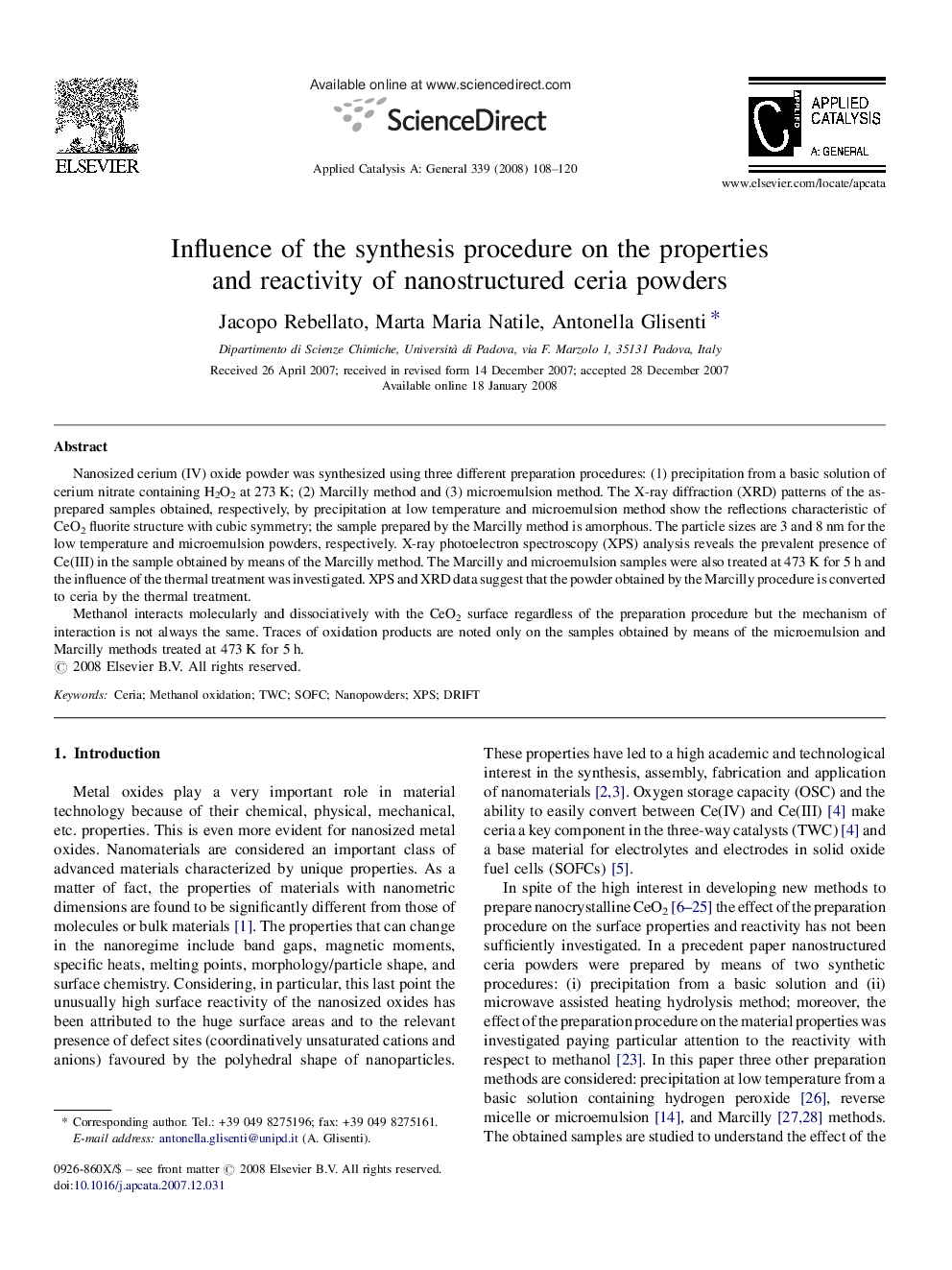| Article ID | Journal | Published Year | Pages | File Type |
|---|---|---|---|---|
| 43305 | Applied Catalysis A: General | 2008 | 13 Pages |
Nanosized cerium (IV) oxide powder was synthesized using three different preparation procedures: (1) precipitation from a basic solution of cerium nitrate containing H2O2 at 273 K; (2) Marcilly method and (3) microemulsion method. The X-ray diffraction (XRD) patterns of the as-prepared samples obtained, respectively, by precipitation at low temperature and microemulsion method show the reflections characteristic of CeO2 fluorite structure with cubic symmetry; the sample prepared by the Marcilly method is amorphous. The particle sizes are 3 and 8 nm for the low temperature and microemulsion powders, respectively. X-ray photoelectron spectroscopy (XPS) analysis reveals the prevalent presence of Ce(III) in the sample obtained by means of the Marcilly method. The Marcilly and microemulsion samples were also treated at 473 K for 5 h and the influence of the thermal treatment was investigated. XPS and XRD data suggest that the powder obtained by the Marcilly procedure is converted to ceria by the thermal treatment.Methanol interacts molecularly and dissociatively with the CeO2 surface regardless of the preparation procedure but the mechanism of interaction is not always the same. Traces of oxidation products are noted only on the samples obtained by means of the microemulsion and Marcilly methods treated at 473 K for 5 h.
Graphical abstractNanosized ceria was synthesized using three different preparation procedures: (1) precipitation from a basic solution of cerium nitrate containing H2O2 at 273 K; (2) Marcilly method (3) microemulsion method. The samples were characterized by means of XRD, TEM, XPS, DRIFT and thermal analysis. The influence of the preparation procedure on properties and reactivity was investigated.Figure optionsDownload full-size imageDownload as PowerPoint slide
